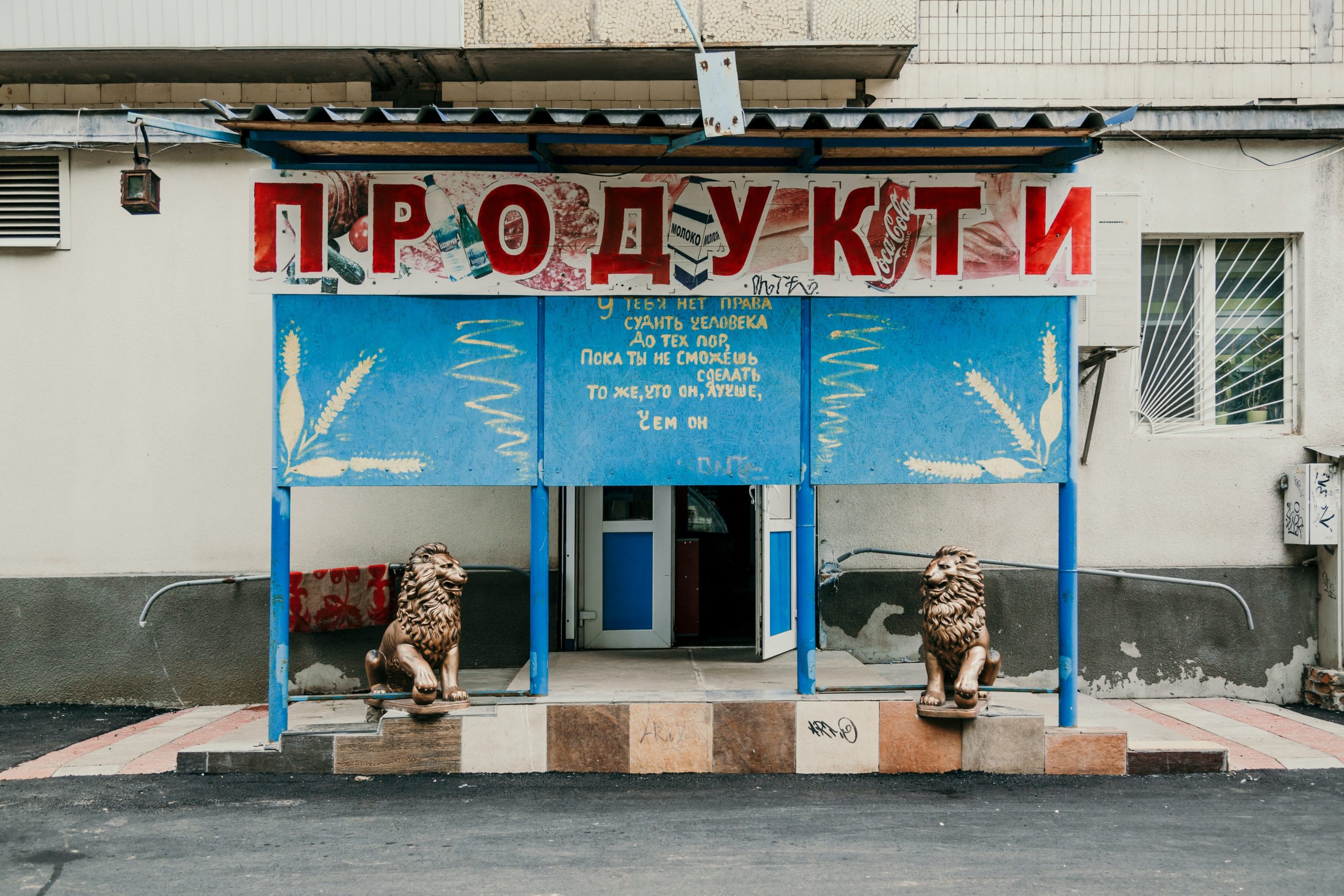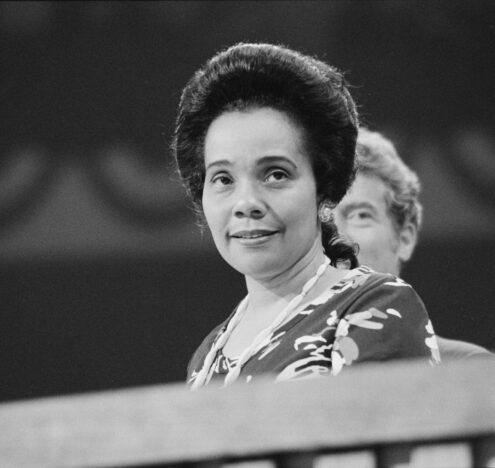“Demilitarization and Denazification of Ukraine” was the justification President Vladimir Putin used before conducting Russia’s “special military operation” into Ukraine, along with “protecting” the Russo-ethnic people of the Luhansk and Donetsk regions. While these claims are false, it is worth noting that Ukraine’s strongest fighters have been the Azov Battalion, a far-right paramilitary that has been enveloped in the wider Ukrainian armed forces.
The Azov’s success in battle has spanned back to the 2014 Crimean War, and the Ukrainian government has built a reliance on their fierce fighting capabilities in several theaters. Yet, despite dismissals of their danger to stability in Ukraine, several troubling patterns suggest that Azov and its political wing, the National Corps, should not be overlooked, especially in a post-war Ukraine. First, the Azov has increased its number of fighters from 300 in 2014 to between 900 and 2500 in 2022, which is in tandem with the National Corps’ growth in size to a party membership of between 10,000 and 15,000 people. Second, they retain popular support from all spectrums of the ideological zeitgeist, from nationalists to conservatives to neo-Nazis, who are now being conscripted to fight in the war. And third, while the party and the battalion are primarily men, there have been reports of women volunteering for various militias, including the Azov under the National Guard.
Signs of strategic indifference from policymakers and media have been expressed with the US military reversing its ban on training Azov soldiers and Facebook lifting the ban on its social media page. Withstanding the current Russian encroachment is pivotal to ensuring further aggression does not take place across Eastern Europe. But just like in the 1980s, when priorities of the Cold War resulted in policy oversights in Afghanistan, the United States and NATO may find themselves in a quagmire with a potential transnational actor that is not separated by a continent and dense terrain but rather has easy land access to various European states.
TRANSNATIONAL NETWORKS BEYOND UKRAINE
The reality on the ground of the far-right’s size in Ukraine cannot be defined by how many fighters are listed as serving under the Azov Regiment. At the start of the year, around two months before the invasion, former FBI agent Ali Soufan estimated that more than 17,000 foreign fighters had come to Ukraine over the past six years from 50 countries, with Azov orchestrating recruitment for a network of extremist groups that spanned from California, through Europe, and to New Zealand. As Soufan explains, consistent with the modus operandi of ideological non-state groups, the spread of far-right extremism is a transnational movement that actively recruits and spreads ideas beyond borders.
Since President Joe Biden has committed to provide $19 billion for immediate military support to Ukraine, it is imperative to assess and directly address the threat from Ukraine’s far-right elements.
While not all of the recruits were confirmed to be neo-Nazis or even considered “far-right” by any kind of ideological litmus test, Azov has had a history of actively communicating with groups across Europe. For example, members of the group utilized the neo-fascist chat forum Iron March to convene with other neo-fascist organizations in Europe, including Italy’s CasaPound, the UK’s Blood and Honour, Sweden’s Nordic Resistance Movement, Greece’s Golden Dawn, and Serbias’ Serbian Action. There was also a confirmed correspondence by members of Azov with US-based Atomwaffen co-founder Devon Arthurs attempting organizing a visit to Ukraine according to monitoring undertaken at West Point’s Combating Terrorism Center. Arthurs’ correspondence showcases what potential the dichotomy of Azov’s continued growth can result in; the ability for radicals to travel and receive training and/or combat action.
Inquiries by independent researchers and international organizations, including the UN, also suggest assertions contrary to the notion that the Azov has gone legitimate and is now accountable to the Ministry of Internal Affairs, as reiterated by President Volodymyr Zelenskyy. In 2016, a report by UN High Commissioner for Human Rights found that members of Azov were engaged in activities beyond their jurisdiction after the Nov. 11, 2014, date of their assimilation into the National Guard as a unit. These activities included corroborated reports of extrajudicial torture, sexual violence, and politically-motivated subversion of a Ukrainian television channel. In 2017, they proceeded to publicly project themselves as the vanguard of defense for the nation independent of the Ukrainian military, as their official Twitter account at the time tweeted: “When the Ukrainian Army ran, #Azov stood up to fight for #Ukraine” and followed this tweet with unsanctioned artillery shelling of pro-Russian separatist locations.
Even in the current conflict, despite the declaration by the Ukrainian government of a unified nation in this battle, reports on the ground have indicated there are instances of in-fighting between the Azov and Ukrainian military units. For example, independent journalist Patrick Lancaster, who’s been on the ground in Ukraine for the duration of the war, reports claims by locals of Mariupol that Azov fighters were opening fire on Ukrainian soldiers who were attempting to retreat under orders from their command because they wanted to stay and fight.
Michael Colborne, author of “From the Fires of War,” a book on Azov, noted it is difficult to distinguish official and unofficial affiliates of Azov because “many official initiatives themselves blur the lines by having clear relationships and links with unofficial initiatives and vice versa.” Examples of this ambiguity are the National Corps’ affiliate, the Youth Corps, and their youth camps. Despite the public image of these camps as essentially summer camp-style programs, they include activities such as assembly and disassembly of firearms, target practice, and espousal of a nationalism heavily influenced by the party and Azov’s ideology. Thus, there is a clear linkage between youth development and future soldier recruitment.
The Azov has approximated that “only 10-20%” of the unit’s soldiers are likely extremist neo-Nazis. However, this does not account for the fact that the National Corps, the political wing of Azov, is encompassed between 6,500 and 10,000 members whose allegiances are not tracked and who are now all likely becoming combat-tested fighters per Zelenskyy’s ordering of all able-bodied men between the ages of 18–60 to stay in the country and fight. This culminates in an extensive network of potentially ideologically radical fighters that spread beyond the scope of being Azov Regiment and who can send ideas and operations overseas.
AZOV’S ACCESS TO WEAPONS AND RECRUITS
The Ukrainian military has already displayed an ability to withstand the Russian assault with effective tactics and successfully employ their capabilities. Azov has played a critical role in defense of Kyiv and Mariupol. As a result, they have become well equipped with weapons provided by NATO and will likely gain access to the armaments included in the US care package. Azov’s role in these battlegrounds has been to act as a forward-deployed unit alongside units from the regular Ukraine military, making them the first line of defense withstanding Russian encroachment.
While efforts within Ukraine are still focused on Russia, it is important that policymakers and military officials in Washington strongly consider engaging Ukrainian leaders on their efforts for controlling far-right militant groups and political parties.
The inventory in this supply of international arms includes Bayraktar TB2 drones, Switchblade drones, Stinger missiles, Javelin missiles, AT4 anti-tank weapons, NLAW missiles, Starstreak anti-aircraft missiles, and Mi-17 helicopters. This gives the Ukrainian military new capabilities it may not have had before, intending to sustain resistance against a more significant conventional force successfully. But it also provides the Azov with access to these weapons, which could be dangerous and a cause of instability in the future. For example, if a group similar to the Ukrainian military wished to wage an asymmetric battle against another state or export these capabilities to assist other groups with similar intentions in other countries, the new stockpile provided to the Ukrainian military would give access to that inventory. This compounds the threat already posed by the preexisting abundant illicit arms market in Ukraine. Ukraine’s illegal arms market is one of the largest in Europe, particularly with small arms and ammunition. Additionally, the ability to track any weapons supplied will now become exponentially more difficult with the Russian invasion, a difficulty alluding to the tracking of the new aforementioned capabilities being supplied. In other words, the framework for underground weapons transactions already existed in the state, and now the array of options for the types of weapons that can be purchased will likely expand.
These groups could very well have access to soldiers capable of operating these systems, which will know how to employ them effectively. This is not limited to kinetic war either. Azov has had success recruiting efforts conducted on end-to-end encrypted communication platforms, such as Telegram, that promote the group’s ideology and rally fighters. Telegram has acted as the main propaganda and recruitment tool because of its user confidentiality features in tandem with the banning of Azov in recent years from Facebook and Twitter. However, Facebook in years past was also an effective mode of spreading propaganda for the group. Risk intelligence firm Flashpoint discovered that three Telegram channels were affiliated with Azov, with two solely for recruitment.
On Feb.1, 2022, the administrator of a Ukrainian-language Telegram channel shared information for a recruitment drive in Mariupol seeking to fill the following positions: veterans with combat experience, Azov Battalion veterans, medical personnel with combat experience, physicians and nurses with at least three years of experience, ambulance drivers, truck drivers, tractor drivers, and mechanics. If Azov remains on these platforms after the war, the lack of supervision and regulation will give the group the freedom to conduct recruitment for ideological and military purposes.
TROUBLING PARALLELS
Skeptics of the Ukrainian far-right in the war have consistently alluded to the parallels with support for the mujahideen in the Soviet-Afghan War and its divulgence into becoming a training ground for Islamist fighters from around the world and the rise of regional instability with the Taliban. However, contemporary case studies from the past decade offer even more insight into this threat of the region having the potential to be a vacuum for ideologues to become combat trialed and trained.
The Tuareg Rebellion of 2012 saw a large influx of ethnic Tuareg fighters pour into the nation of Mali and launch a successful armed resistance against the government, which eventually became a vacuum that allowed transnational Islamist fighters to join in the fight as well. Before French forces intervened with Operation Serval and the follow-up Operation Barkhane, the conglomerate of Tuareg and Islamist groups could essentially control the north of the country and were gaining territory leading toward the ethnically contested central region. The two swaths of fighters, transnational Islamist and ethnic Tuareg, were ideologically opposed to one another despite initial security pacts at the start of the war. However, once Pandora’s box was open, ideology was irrelevant regarding the state of players and their allegiances; the unrest was exploited and malicious groups had successfully infiltrated.
What is critical here is that the arming, combat tactics, and experience the Tuareg brought to the fight came primarily from the fact that large swaths of the boots on the ground gained experience in Libya during the civil war and took the remaining stockpiles of arms across land borders to Mali. After the fall of the Gaddafi regime, Tuareg fighters returned to Mali via northern Niger with fresh stocks of small-arms, ammunition, fighting vehicles, and anti-aircraft weaponry. The destabilization of Libya and Tunisia also resulted in the expansion of al-Qaida in the Islamic Maghreb’s maneuverability in the Sahel and Sahara, allowing their freedom of movement inside Malian borders.
A state conflict, therefore, can become the epicenter of regional instability, especially if the government in power cannot maintain legitimacy in the postwar vacuum. In a similar fashion to Ukraine and its relation to Europe, Libya and Mali were accessible by land routes, thus allowing for an easier supply chain for fighters and transferring of men to various battlefronts. While European state borders are structurally less porous than those of sub-Saharan states, illicit trade such as the opium market showcase how vulnerabilities can still be penetrated within the Eurasian landmass. Ukraine already has an underground market that has become a haven to send weapons through Europe.
While efforts within Ukraine are still focused on Russia, it is important that policymakers and military officials in Washington strongly consider engaging Ukrainian leaders on issues such as: long-term outcomes concerning post-war stability, institutional strength, monitoring of weapon distribution, and efforts controlling far-right militant groups and political parties. Many advocates in Washington and Europe have dispelled any concern about Ukraine’s grip on the far-right elements of its military, and consider any conversation pertaining to this as Western hysteria with far-right extremism. Even if that were true, as Ukraine’s primary military funders and suppliers, the United States and NATO are within their rights to address any concerns regarding the strength of far-right proxies.
Since President Joe Biden has committed to provide $19 billion for immediate military support to Ukraine, it is imperative to assess and directly address the threat from Ukraine’s far-right elements. The United States must press the Ukrainian government on the allegations of intra-military shootings, why Azov affiliates have been able to conduct malicious acts with no accountability post-2014, and what plan they have in place if an uprising occurs.
Nicholas Paul Pacheco is an Army Officer and resident Anna Sobol Levy Fellow at Reichman University in Herzliya, Israel. The views expressed are those of the author and do not reflect the official position of the US Military Academy, Department of the Army, or Department of Defense.




















